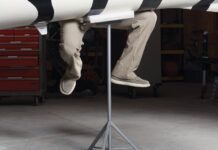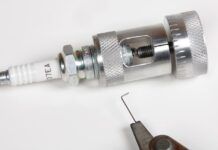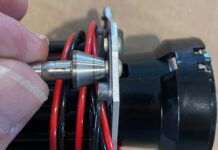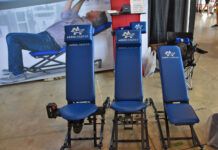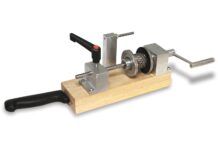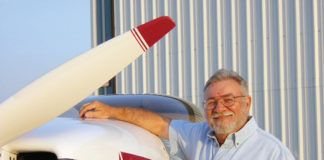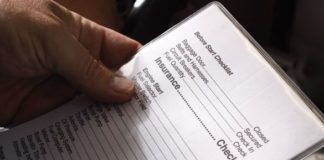I spent my formative years hanging around my dad’s shop. When I was little, most Sundays after church we’d stop in to check on things (“It’ll just take five minutes”) and sometimes get to play hide and seek among the machines. By the time I was 13, I was working summers part-time as a janitor’s assistant for 25 cents an hour. When I got tall enough, Dad let me use the sandblaster.
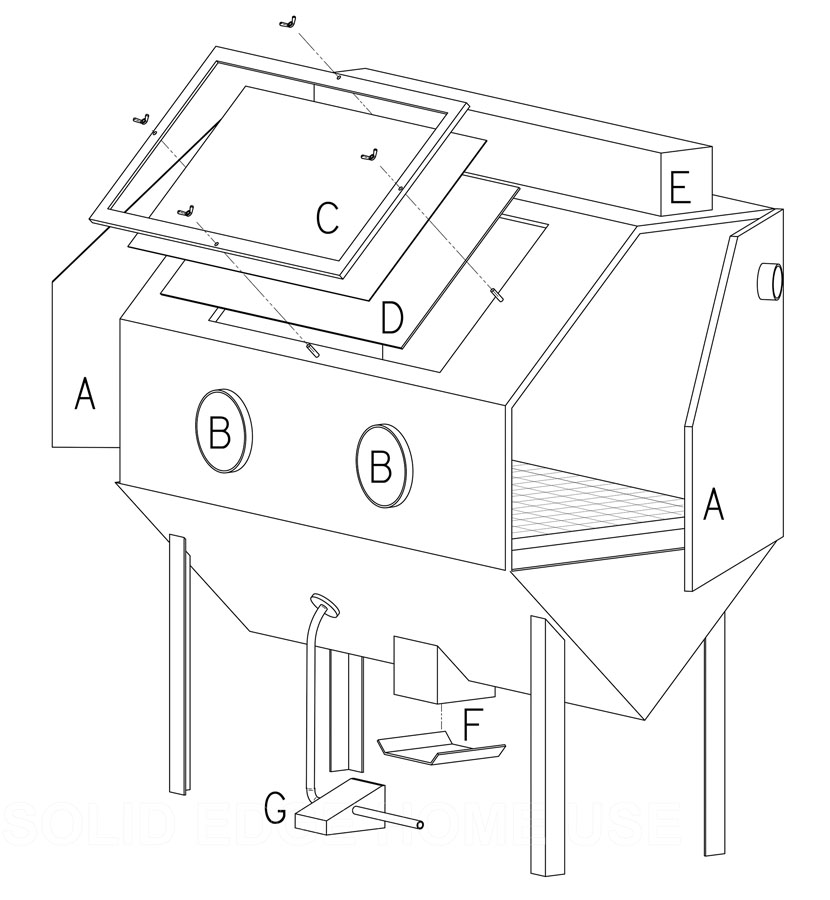
A typical abrasive blasting cabinet includes doors on the side (A) or top, protective gloves (B), a Plexiglas window with a hold-down frame (C), a sacrificial plastic window protector (D), a blasting hose with nozzle (not shown), a light bar (E) to illuminate the work, a trap door (F) to empty the abrasive, and a foot pedal (G) to modulate the airflow.
Like most teenagers, I had the attention span of a lightning bolt (maybe even less). Yet, working the sandblaster holds your attention. It’s sort of slow-motion instant gratification. I’ll never forget that sensation, that satisfaction, that magic, of blasting away old paint and the slow reveal of frosty-clean bare metal.
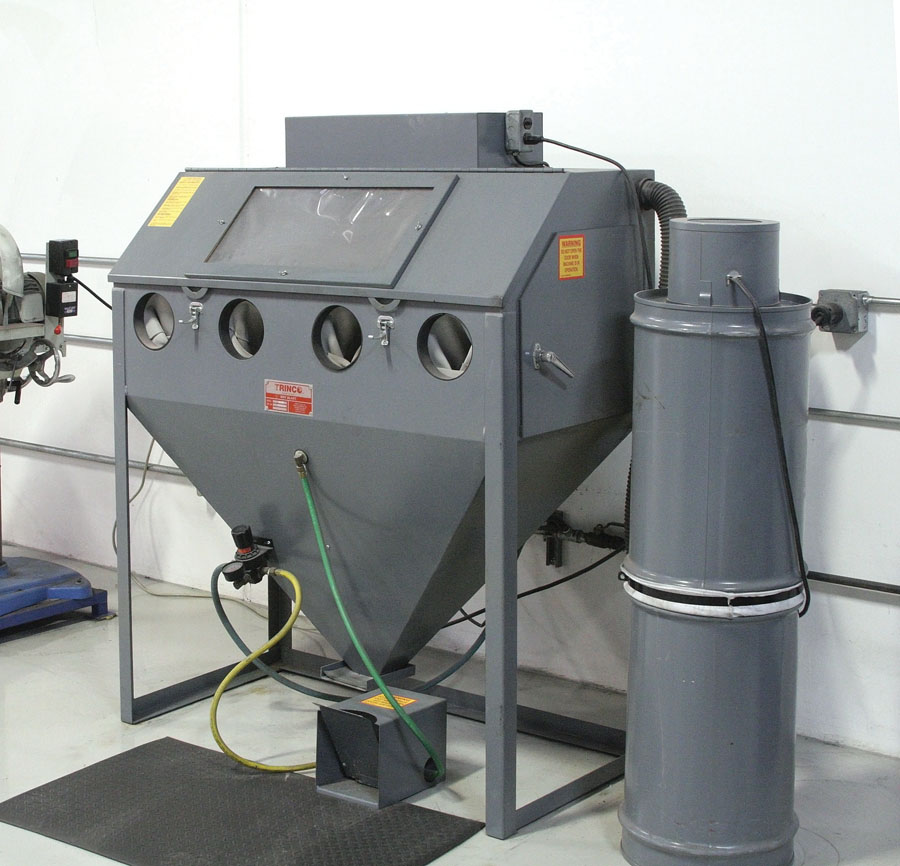
The large industrial unit sports an extra-wide cabinet with four gloves. Note the dedicated dust extractor with a bag-in-canister filter.
In retrospect, the Old Man knew what he was doing. Anyone can be trained to use a sandblaster in a couple of minutes, even a teenager. Compared to practically everything else in a machine shop, it’s nearly impossible to hurt yourself, and you really have to work at it to scrap parts.
Sandblasters don’t really blast sand. The correct terminology is abrasive blaster, and there are two basic types: enclosed cabinet and portable or outdoor. Enclosed cabinet abrasive blasters are the subject of this column, and they are a staple item in machine and fabrication shops. In fact, it would be highly unusual not to find one in all but the most specialized of shops. (Portable blasters are used on buildings, cars, engines, and other objects too big for a cabinet blaster.)
Blasters work by siphoning an abrasive through a hose into a stream of compressed air and shooting it toward the part being blasted. The abrasive is never sand (specifically silica) because it can cause serious respiratory issues. The choice of abrasive depends on the job you’re doing, such as removing paint, rust, or tool marks; the desired texture of the blasted surface; and the substrate being blasted.
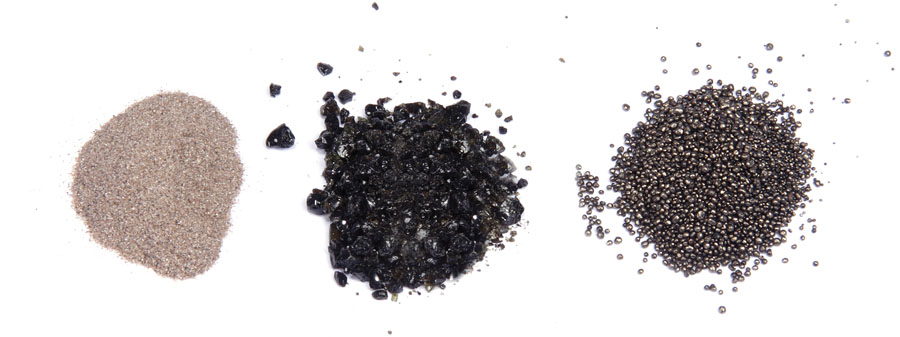
Typical blasting abrasives (left to right): 180-grit aluminum oxide (AO), glass-hard coal slag (sold under the brand name Black Beauty), and steel shot. Aluminum oxide works great, but it generates the most dust. Coal slag is versatile and lasts a long time with very low dust. Steel shot itself generates no dust, except for whatever paint or rust is being blasted.
Suppliers of abrasives will provide guidance as to what works best for a particular job, as well as what not to use. For example, McMaster-Carr (www.mcmaster.com) lists glass beads, steel shot, and aluminum oxide as “multi-purpose” abrasives for metals, and walnut shells, corn cob, and baking soda as “soft” abrasives for plastics and fiberglass. Most come in various grits and mesh sizes (the lower the grit, the higher the mesh size and vice versa). Like sandpaper, the coarser the grit, the more aggressive the blasting action. Most blasting cabinets have a dump or trap door, so changing grits or swapping abrasives is but a minor inconvenience.
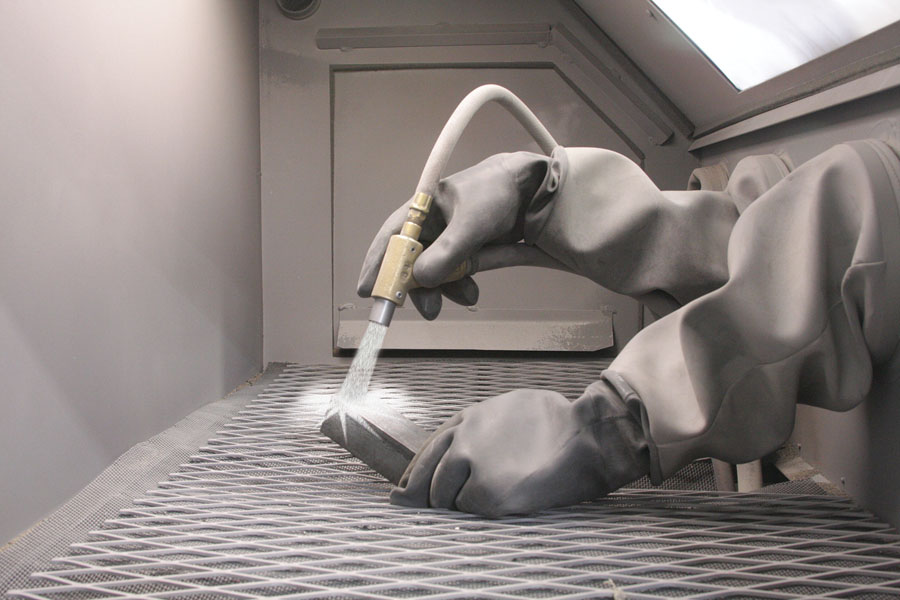
Think of sandblasting as spray washing with an abrasive. Hold the nozzle about three inches away and let it rip! If the abrasive is fresh and the air pressure sufficient, most old paint, rust, and tool marks don’t stand a chance. (Note: the blasting stream depicted in the photo is simulated.)
Small benchtop cabinets have provisions to hook up, but generally don’t include, a method to extract the dust generated by the blasting process. In most cases, a small shop vacuum is sufficient, but many equipment suppliers offer dedicated extractors as an option.
Dust extraction is an absolute necessity for all but the smallest jobs (cleaning spark plugs, etc.). Imagine trying to fly through a sandstorm—because that’s pretty much what’s going on in the cabinet. In addition to not being able to see, waiting for the dust to settle to open the cabinet could take several minutes. If the convenience factor isn’t enough to convince you, consider it from a health and safety standpoint: Dust extraction keeps floating particles from leaking out of the cabinet.
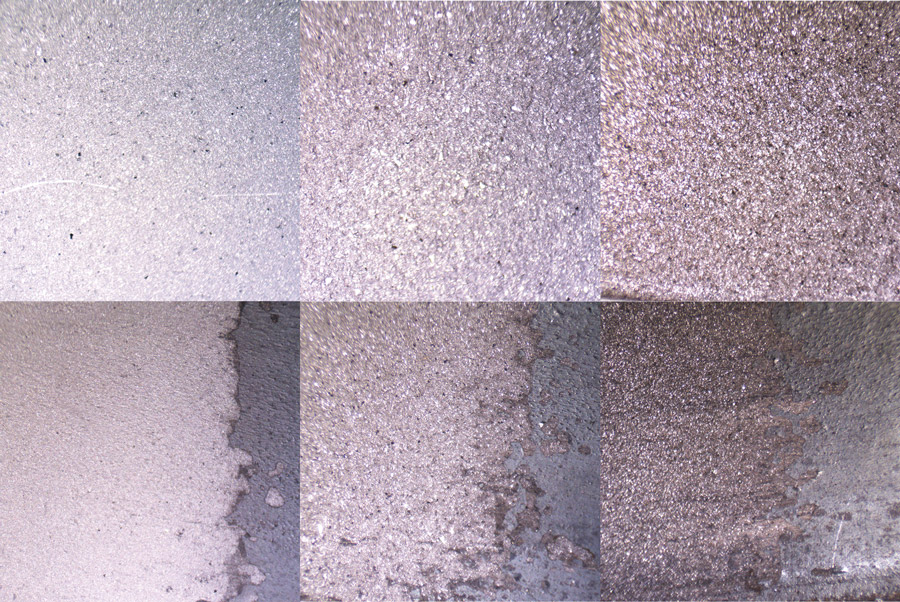
Left to right, the resulting surface texture of 180-grit AO, Black Beauty, and steel shot on 6061 aluminum (top horizontal band) and angle iron (lower horizontal band). The angle iron was blasted to remove mill scale (the gray to the right of each sandblasted region).
One thing all blasters need, even small benchtop blasters, is a decent supply of compressed air. If all you’re doing is cleaning spark plugs and frosting small parts, you might be able to get away with a small compressor designed for a nail gun (1/3-hp motor with a three-gallon tank is typical). But removing paint, rust, or mill scale requires a compressor capable of delivering high pressure (at least 80 psi) at steady volume. Even a medium-size compressor (1+ hp motor with 10- to 15-gallon tank) will not be able to handle continuous blasting. For most home shops, space is an issue, so we make do. When necessary, pause to let the compressor catch up, so the blaster will actually blast whatever it is you’re blasting.
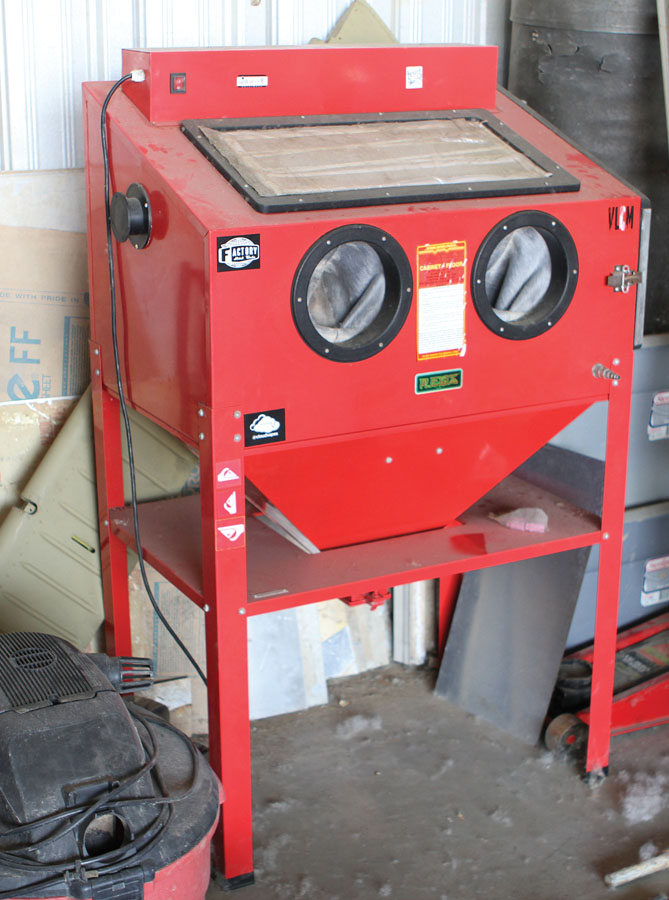
This is a good example of a small shop floor model abrasive blaster. Notice the shop vacuum at the left, which can be hooked up to the flange on the upper left side of the cabinet.
Closing Thoughts
Sandblasting can create a lot of static electricity. Make sure the cabinet is well grounded.
Sandblasting with used or old abrasives will leave the surface dusted with a composite containing micro particles of whatever has been through the blaster since it was last cleaned. Blow off any residual dust with clean, dry air and, if necessary, wash with a metal prep or degreaser.

A typical small shop benchtop abrasive cabinet. Though it lacks some of the conveniences of a floor model, such as a light and a trap door, the large window and relative portability make it a practical option when space is limited. Note the dust extraction port on the left side for a small shop vac.
Freshly blasted steel and iron parts will rust almost instantly. When sandblasting in preparation for welding or painting, commence with those procedures as soon as possible after sandblasting.
Sandblasting parts “painted” with the powder-coat process is the world’s most boring job. If you have to sandblast a large frame or engine mount that’s been powder coated, consider having it done professionally by a qualified shop that can remove the coating by chemical bath or by baking it off.
Sandblasting is a great job for interns and kids hanging around the shop.

![]()
Bob Hadley is the R&D manager for a California-based consumer products company. He holds a Sport Pilot certificate and a Light-Sport Repairman certificate with inspection authorization for his Jabiru J250-SP.





